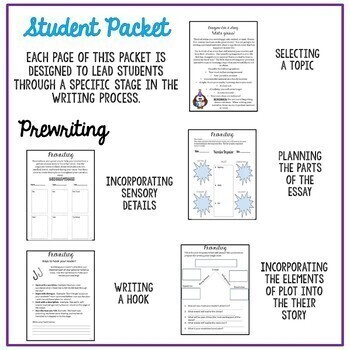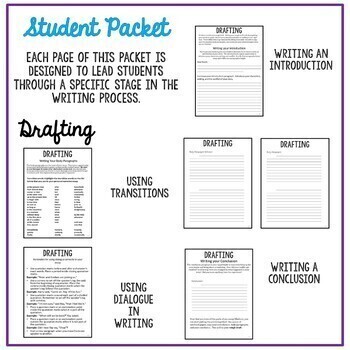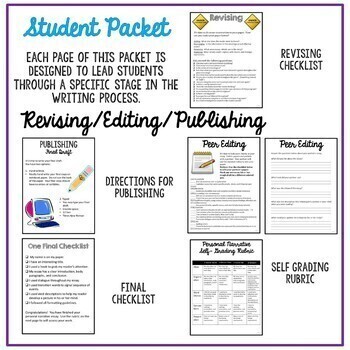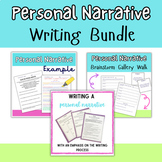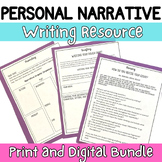Personal Narrative Essay- Emphasis on the Writing Process- 6th, 7th, 8th Grade
- Zip
- Easel Activity
What educators are saying
Also included in
- Grab this personal narrative essay writing bundle for your middle school students! With three resources included, your students will produce essays that they will be proud of while focusing on the writing process. What's included: 1. Personal Narrative Brainstorm Gallery Walk- Personal narrative wriPrice $4.20Original Price $6.00Save $1.80
- Discover this engaging bundle for enhancing your students' personal narrative writing skills with this resource, carefully curated to cater to all your teaching needs.Inside this resource, you will find not one, but two personal narrative writing resources, each offering a unique approach to empowerPrice $4.25Original Price $6.50Save $2.25
Description
Ignite your students' writing abilities with this personal narrative writing resource, thoughtfully aligned with educational standards to foster growth and proficiency in writing.
With the convenience of a printable student workbook, this resource provides a guide that empowers each student on their journey towards crafting a compelling personal narrative essay. Within the workbook, students will navigate through a series of carefully designed activities and exercises, allowing them to develop essential writing skills while immersing themselves in the art of storytelling.
From constructing a captivating introduction to crafting well-structured body paragraphs and concluding with finesse, students will explore each facet of the personal narrative essay, acquiring a deep understanding of its core elements. By employing a step-by-step approach, this resource seamlessly guides students through the entire writing process, instilling invaluable writing habits and techniques.
Beginning with prewriting exercises that encourage brainstorming and organizing ideas, students will progress to crafting a rough draft that captures the essence of their narrative. They will then delve into the vital stages of revising and editing, refining their work and honing their ability to express their thoughts effectively. Finally, students will take pride in publishing their polished narratives, celebrating the culmination of their writing journey.
This resource not only equips students with the necessary tools and structure for writing personal narratives but also nurtures their creativity, critical thinking, and self-expression. By engaging in this comprehensive writing process, students will develop a profound appreciation for the power of storytelling and the importance of effective communication.
What is included:
Page 1- student packet cover sheet and introduction page: lists the objectives that students will achieve during this unit, introduces the assignment/gives ideas for topics
Pages 2,3,4- prewriting: students outline their story and develop descriptions. They also develop a hook for their introduction paragraph.
Pages 6-10- Drafting: students draft their essays working on the introduction, body paragraphs, and conclusion.
Page 11- revising: Students revise their paper using a checklist.
Pages 12- Peer editing: students swap papers and peer edit (you can remove these pages if peer editing is not possible or needed).
Pages 13 publishing and self assessment- students type or write their final draft. They also self assess their paper before turning it in.
Page 14- teacher grading rubric: a rubric is provided for easy grading and a place to write comments.
You have a couple of different options when teaching this unit.
-You can print the student workbook pages 2 sided and assign it as an independent work assignment.
-You can print the workbook and work through it step by step as a class.
-You can print copies of the pages and hand them out as you cover them in class together. Students would be building their workbooks along the way.
Writing Process posters
Title Page
Prewriting (2)
Drafting (2)
Editing (2)
Revising (2)
Publishing (2)
If you are interested in having students color-code their narratives either digitally or with markers, check out this FREE resource!
Personal Narrative Color Coding Slideshow
Looking for other creative writing ideas? Check out these resources:
Scrooge's Scrapbook- A Christmas Carol
An Ode to Valentine's Day Writing
Let's be Friends!
Join the Oh So Simple ELA Monthly Newsletter!
Follow me on Teachers Pay Teachers- You will receive notifications about new resources, sales, and freebies!


